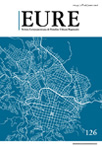Cultura, transformación urbana y empoderamiento ciudadano frente a la gentrificación. Comparación entre el caso de Getsemaní (Cartagena de Indias) y el Raval (Barcelona)
DOI:
https://doi.org/10.4067/S0250-71612016000200005Palabras clave:
cultura urbana, gentrificación, participación ciudadanaResumen
La cultura se ha convertido en un elemento esencial en los procesos de transformación urbana, especialmente en los barrios céntricos de las ciudades históricas. Ello se explica por lo decisivo de su rol en cuanto a fomentar el consumo y la marca territorial en el marco de la globalización de flujos económicos y turísticos. Este papel de la cultura en la refuncionalización del espacio urbano ha sido reiteradamente criticado por diversos autores. Sin embargo, también se plantea que la cultura puede contribuir a revalorizar los barrios marginales construyendo una imagen positiva, y a empoderar a la ciudadanía contra la gentrificación. Asimismo, como se analizará en el caso de Getsemaní y del Raval, la alianza de los sectores creativos con habitantes tradicionales permite generar discursos y planes alternativos a la expulsión y estandarización de espacios urbanos históricamente populares, creando una identidad de barrio compartida y basada en el patrimonio inmaterial existente.Descargas
Publicado
Cómo citar
Número
Sección
Licencia
Derechos de autor 2016 Revista EURE - Revista de Estudios Urbano Regionales

Esta obra está bajo una licencia internacional Creative Commons Atribución 4.0.
Al momento de aceptar la publicación de sus artículos, los autores deberán formalizar la cesión de derechos de autor a EURE, según las condiciones establecidas por la Revista.
Ésta establece que el autor autoriza a EURE de manera gratuita, exclusiva e ilimitada a reproducir, editar, publicar, distribuir, publicitar, comercializar y traducir el artículo, a cualquier soporte conocido o por conocer y desarrollar.
Del mismo modo, los autores aseguran que el artículo propuesto es original, no publicado y no propuesto para tal fin a otro medio de difusión.


